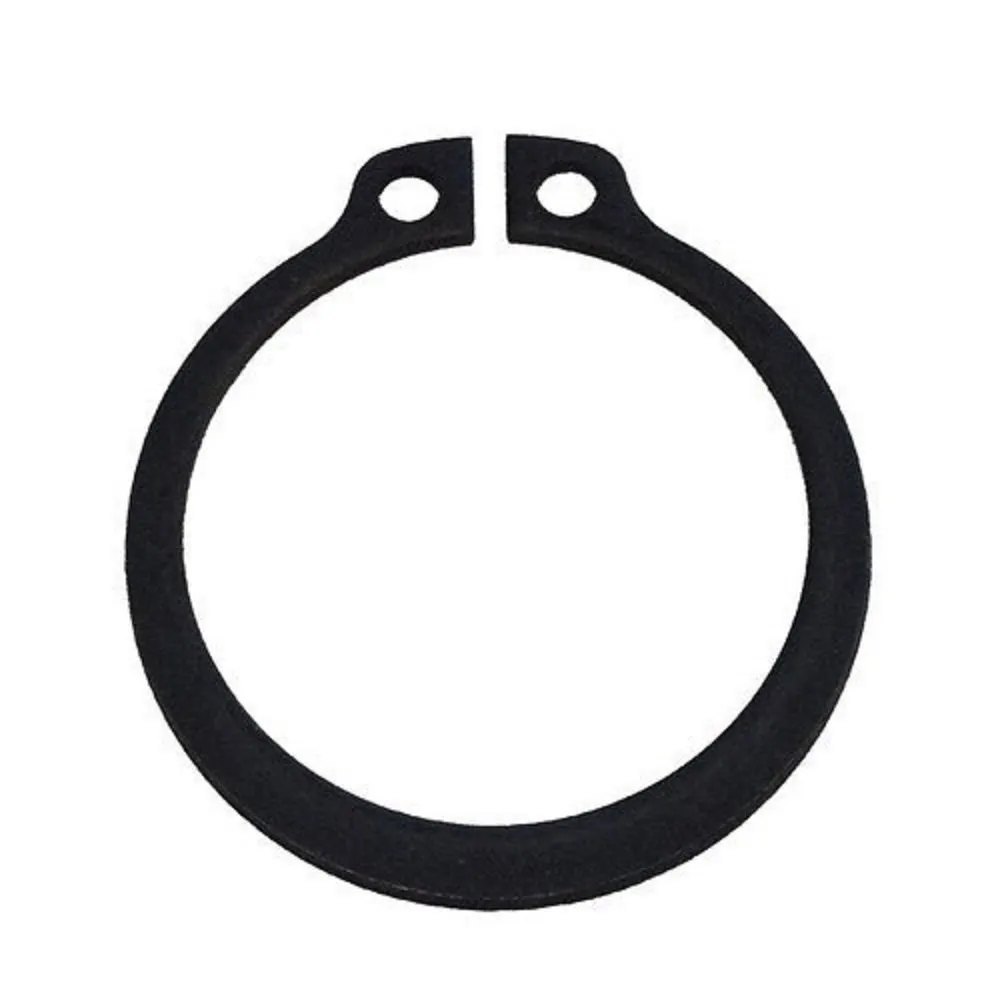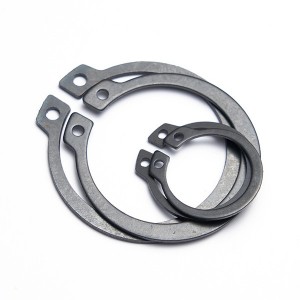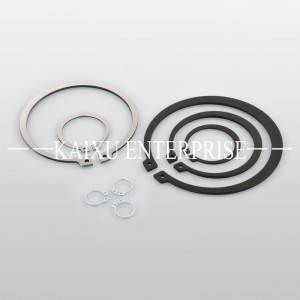Retaining Rings For ShaftExternal Retaining Rings Snap Rings Circlip Circlip Retainer Rings Set (C-Clip Carbon Steel)
Retaining rings vary across multiple dimensions, but when choosing a retaining ring the most important measurements to consider are:
Free diameter – For internal retaining rings, this is the outer diameter and for external retaining rings, it is the inner diameter.
Ring thickness.
Groove size, including the diameter, width, and depth of the groove.
On huyett.com, these dimensions are displayed alongside each product. For example, the product page for a 5/8 spiral retaining ring shows the groove depth (0.013 inches), free diameter (0.658 inches), and groove diameter (0.651 inches). The groove diameter is usually slightly smaller than the free diameter for internal rings and larger for external rings. It’s important not to confuse the two when selecting a retaining ring.
Product pages also display tolerances for these dimensions. When designing an assembly, be sure to note the groove diameter, depth, and width tolerances. Exceeding these tolerances can negatively impact the ring’s performance.
Thrust Load Capacity
Retaining rings primarily encounter axial forces generating a thrust load. All rings are rated to resist a maximum thrust load, which is determined by the properties of the ring and the groove. If you look at Huyett’s retaining rings catalog page for external snap rings, you will find thrust load capacities for the ring and groove, both of which include a safety factor. Exceeding thrust load capacities can damage the ring, the groove, and the assembly.
It is important to note that thrust load capacities are calculated for a specific ring and groove configuration. For example, a 1-3/8 external snap ring has a ring thrust load capacity of 8,222 lbs and a groove capacity of 4,100 lbs.
However, these capacities are only accurate when:
The housing and shaft are made from cold-rolled steel.
The edge margin is within the recommended range – in this case, over 0.126 inches.
The groove width and diameter are of the listed dimensions within the listed tolerances.
The groove is the correct depth with square edges and bottom radii within tolerances.
There is minimal side clearance between the retained part and the shaft or housing.
Specifications for rings, grooves, and retained parts can be found either on the huyett.com product page or the relevant catalog page PDF linked to on each product page.
It is also important to think about the purpose of a thrust load capacity in your application. If you need rings to position and secure bearings in a pump or lock up components in a car or truck transmission, thrust load capacity can be a critically important factor. On the other hand, if you plan to use a ring to hold a plastic wheel on the axle of a toy truck, chances are you won’t have to worry about thrust loads on the ring.






